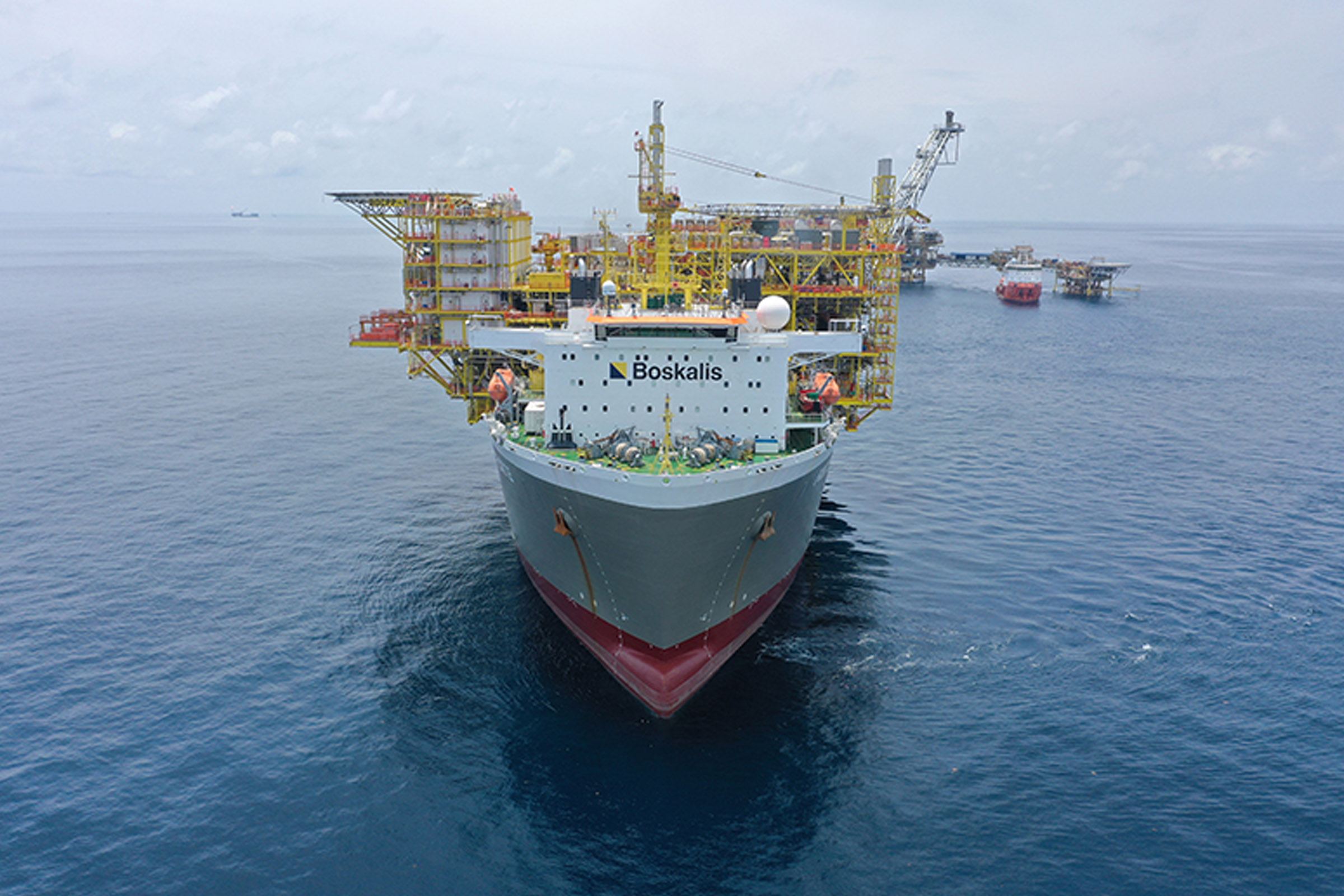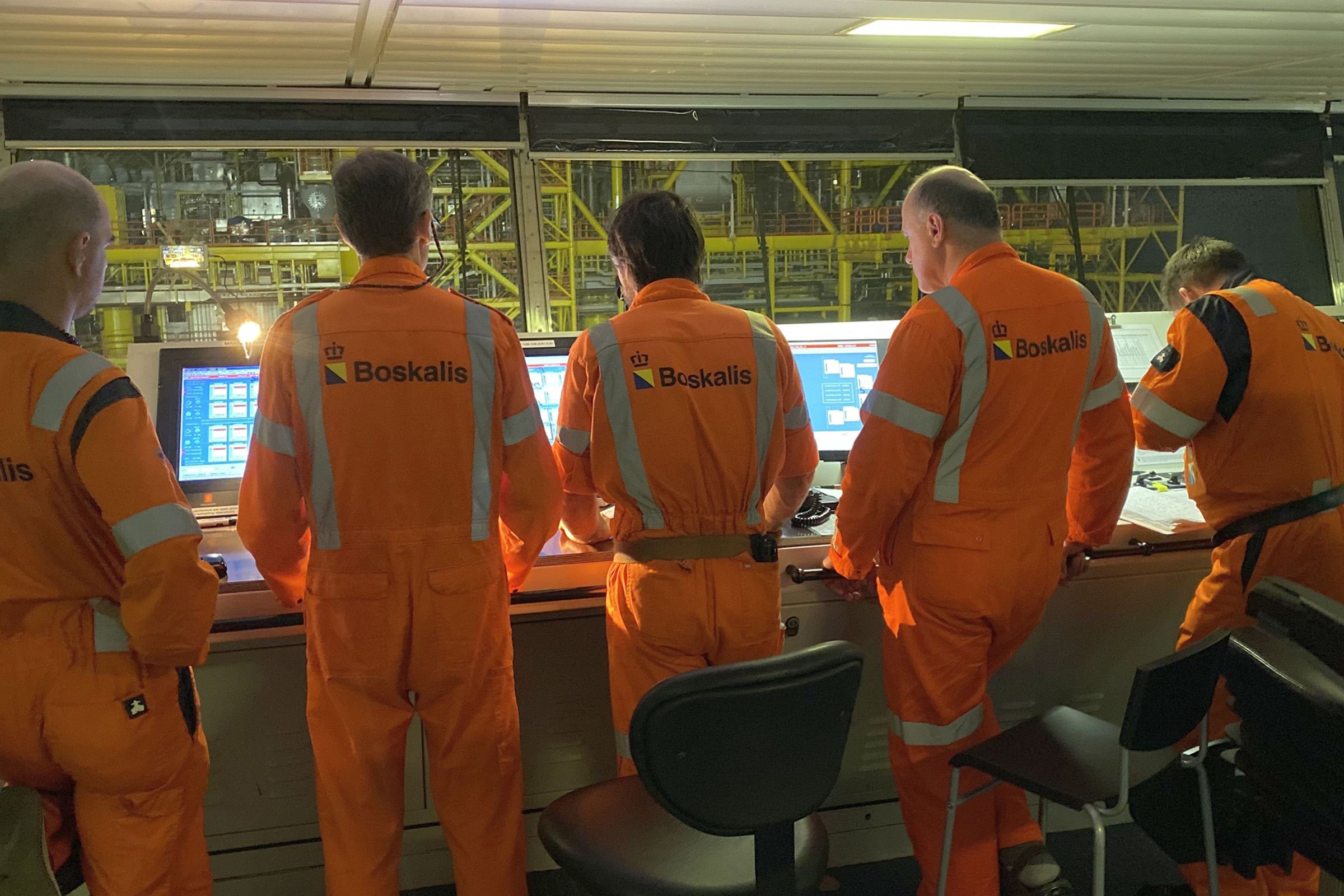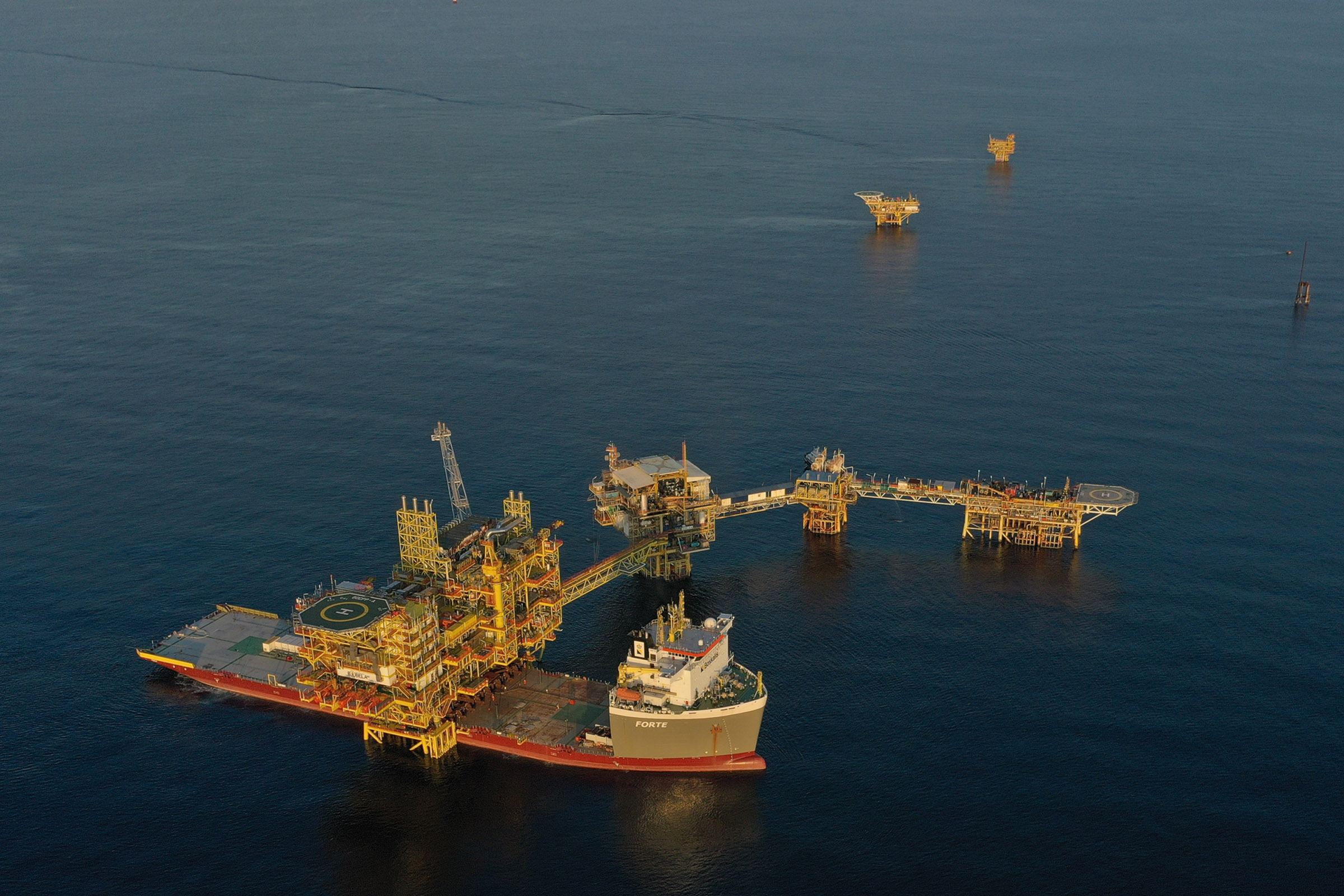The semi-submersible heavy transport vessel Forte completed an incredibly precise float-over installation offshore the Malaysian part of Borneo last year. The accurate positioning of the 11,238-ton Bokor CPP-A topside was the climax of a major project involving colleagues from various disciplines at Boskalis.
The preparations included fitting out the Forte with a dynamic positioning (DP2) system that automatically controls the position and course of the vessel with thrusters and an advanced control system. The system can be used not only in joystick-auto heading mode but also in auto position and auto track modes. All three methods were used during the different phases of the float-over to achieve the required accuracy. The specific conditions on the Bokor project, and particularly the Forte’s limited maneuvering space at the offshore location, were the immediate reasons for installing the DP2 system. “Without DP2, tugs and anchor handlers would have been required to anchor and position the Forte. In this case with dynamic positioning we could execute the operation safer, faster and more efficient,” explains Ronald Goetheer, operations director Heavy Marine Transport.
COVID-19
The COVID-19 pandemic had a huge impact on the project. Closure of the borders also meant that far more permits than usual were needed to enter Malaysia. Team members staying ashore had to spend two weeks in quarantine. Team members boarding the Forte had to go in self-isolation and take PCR tests before traveling. After disembarking the vessel everyone had to be quarantined in Malaysia for another two weeks before being allowed to travel home. The strict regulations and the lack of clarity about the timing of the operation made the work particularly demanding. “We had planned to start in April but everything was delayed for about four months,” says Ronald. “Given the imminent monsoon season, we knew the float-over had to take place no later than August. A demanding operation like this can only be executed when wind speeds are low and wave heights are minimal.”



Load-out
The CPP-A topside production platform was built at a yard in Pasir Gudang, Malaysia, just north of the Singapore border. The load-out - taking the topside on board in a skidding operation - took place in July. This is a precise process in which the topside slides over a pre-prepared track - the skid track - at exactly the right speed. The topside was positioned on board on a dedicated support structure. During the operation, which took twelve hours, there were constant consultations with the people at the yard to make sure that everyone complied precisely with the agreed procedures. The team kept the vessel at exactly the right height with respect to the quay in line with a detailed ballast plan that was accurately executed by the Forte crew. A load-out is always a tense operation but everything went exactly according to plan.
Float-over installation
After seafastening the cargo, the Forte commenced her two-and-a-half day journey to the Bokor field offshore Borneo. Before the start of the float-over on 3 August, a virtual operation was rehearsed extensively to familiarize the DP operators with the equipment and conditions during the execution phase. Shortly before the actual operation, the entire DP2 system was checked again during a trial - docking into a virtual jacket and taking into account the weather conditions at that time. “It was genuine precision work,” explains Ronald. “The Forte has a beam of 43 meters and the topside had to be installed in an opening between two jackets measuring 43 meters and 18 centimeters. So there was less than ten centimeters of space on either side of the vessel.” At the offshore site, the Forte was ballasted so that the topside was raised about one meter above the jacket. Using the information from the survey systems, the vessel then slowly reversed until cameras at the four topside legs showed that exactly the correct position had been reached. Subsequently the ballast system was used to increase the vessel draft exactly and the topside was placed on the corners of the jacket. “Everyone is tense during an operation like this and, of course, it was a huge relief for the entire team aboard the Forte after this precision job was completed without a hitch,” says Ronald. “After each project we review any mistakes made during the execution, so we can learn from it for similar assignments in the future. In this case, that review session didn’t take much time because this operation went perfectly. A big compliment to all Boskalis colleagues involved!”
